“Camille Lepage, a 26-year-old French photojournalist who had spent months documenting deadly conflict in Central African Republic has been killed, the French presidency said Tuesday, May 13. Lepage, a freelance photographer whose work was published in major French and American newspapers, died in western Central African Republic not far from the border with Cameroon, authorities said.
Lepage’s work had appeared in The New York Times as well as in The Wall Street Journal, the Washington Post and the Los Angeles Times. She also had sold images to French newspapers including Le Monde and Liberation. Her death comes as the security situation worsens for reporters and photographers in the volatile country; two Central African journalists already have been killed this month in Bangui, the capital”. – Associated Press
Lepage’s work had appeared in The New York Times as well as in The Wall Street Journal, the Washington Post and the Los Angeles Times. She also had sold images to French newspapers including Le Monde and Liberation. Her death comes as the security situation worsens for reporters and photographers in the volatile country; two Central African journalists already have been killed this month in Bangui, the capital”. – Associated Press
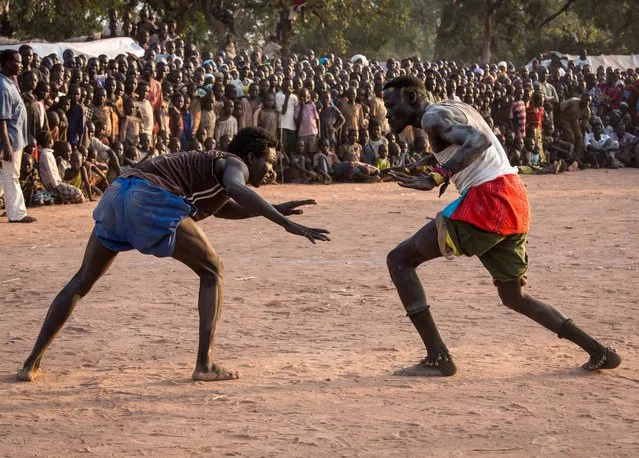
Refugees from South Kordofan celebrate the Eid al-Adha with a wrestling competition at the Yida camp in South Sudan. (Photo by Camille Lepage/AFP Photo)
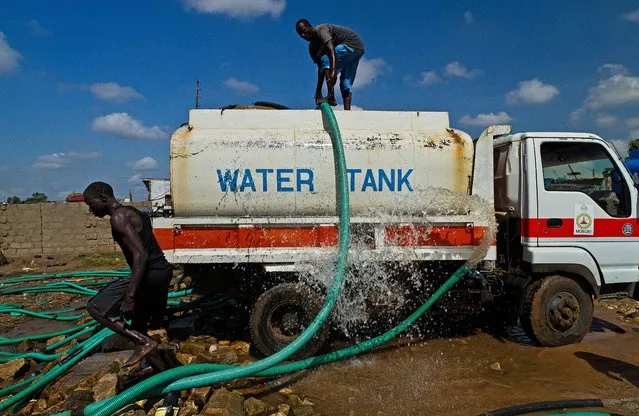
A water pipe comes loose from a mobile water tank in Juba, South Sudan, on September 19th 2012. The water distribution in Juba is carried out via mobile water tanks which transport unfiltered water directly from the river Nile. (Photo by Camille Lepage/AFP Photo)
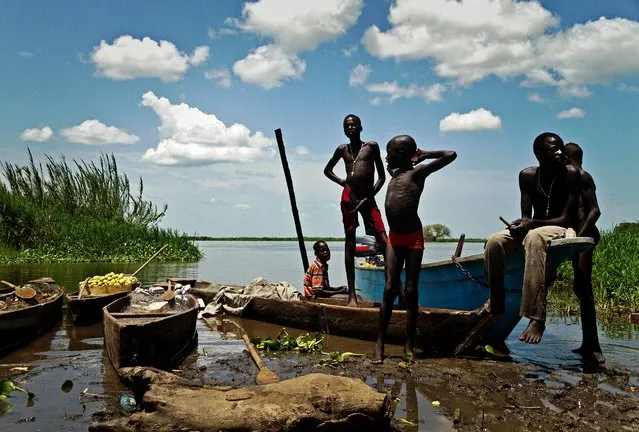
Boys from the Mandari tribe wait by the Nile river for boats with the day's catch to arrive in Terekeka, a fishing community 75km north of Juba in South Sudan, on September 17, 2012. The Mandari are a nilotic tribe and are known for fishing with only spears and nets and for their cattle keeping traditions. (Photo by Camille Lepage/AFP Photo)
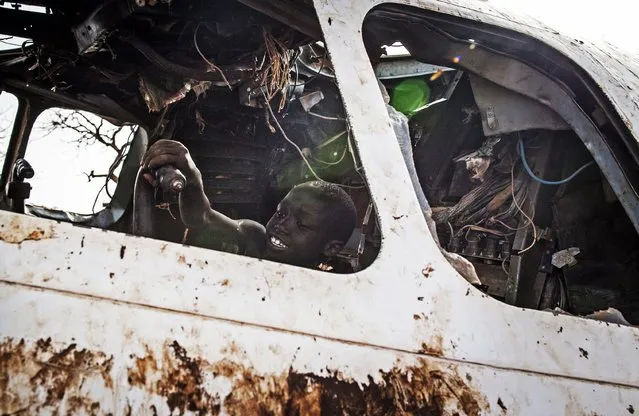
A young refugeeplays on an aircraft that crashed in November 2012 on the Yida airstrip near the Yida refugee camp in South Sudan, February 1, 2013. The Yida refugee camp houses over 60 000 refugees which have fled from the conflict area of South kordofan in Sudan. (Photo by Camille Lepage/AFP Photo)
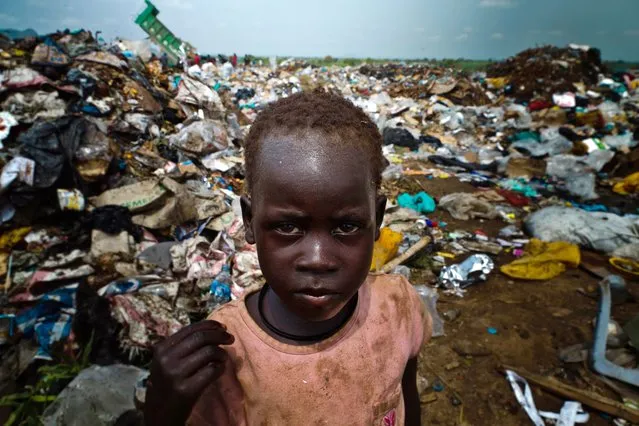
A picture taken on August 1, 2012 shows a young Sudanese posing at a rubbish dump in the South Sudanese capital, Juba. The increase of prices in South Sudan makes life very difficult for south sudanese people, some of them have no other choice but to pick up food or find and sell iron from rubbish dump areas. (Photo by Camille Lepage/AFP Photo)
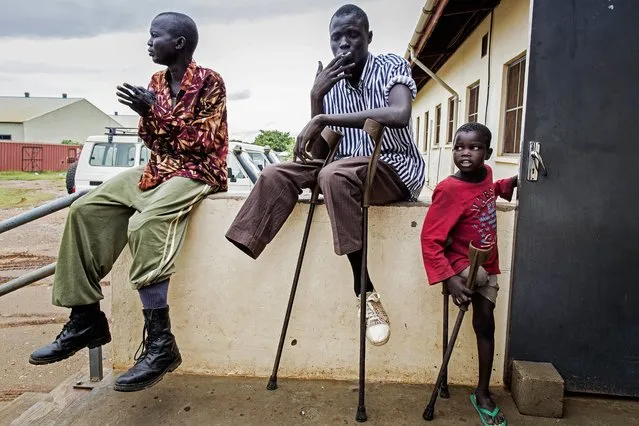
Seven year old amputee, Deng (R), SPLA soldier Kong (C) and Mabior (L) are pictured at the Rehabilitation Centre of Juba, South Sudan, on October 10, 2012. Deng was amputated when he was 4 years old after a mine he was playing with, blew up in his house, killing his mother. Kong stepped on a mine in Upper Nile state early 2012 and Mabior lost his leg at war. The Rehabilitation Centre of Juba was given by ICRC to the governemnt in South Sudan in 2009. 30% of the patients suffer from an amputation related to landmines. Other common injuries include gun shot wounds and untreated animal bites. In South Sudan, due to the lack of hospitals and infrastructure, simple injuries can be left untreated for months which increases the risk of surgical amputation as the only course of action. (Photo by Camille Lepage/AFP Photo)
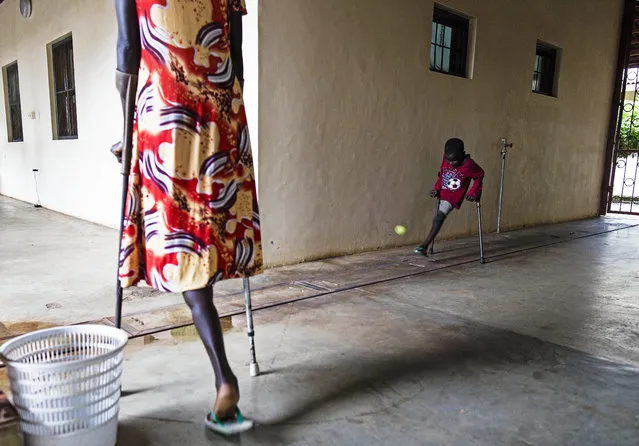
Seven year old amputee, Deng (R) plays with a ball at the Rehabilitation Centre of Juba, South Sudan, on October 10, 2012. (Photo by Camille Lepage/AFP Photo)
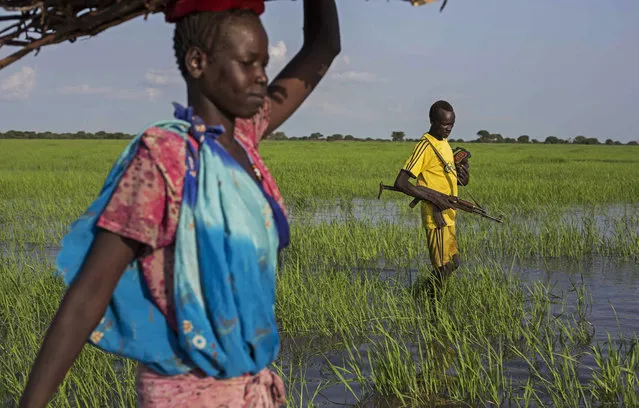
An armed youth walks through a river as he comes back home in the Yuai village, Uror county, Jonglei state in South Sudan on July 24, 2013 after fighting against the rebel group of Yau Yau in Pibor county, South Sudan. (Photo by Camille Lepage/AFP Photo)
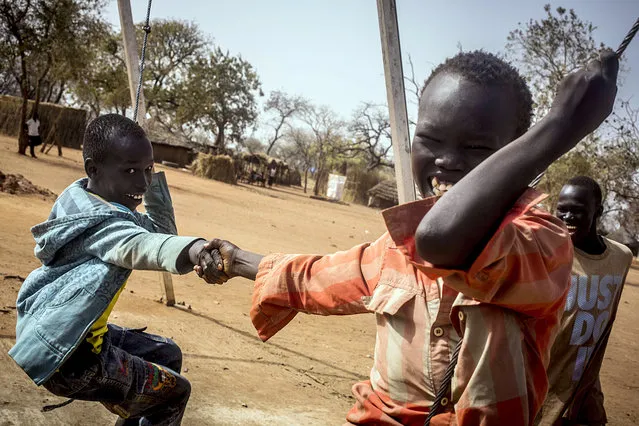
Young refugees are playing on a handcraft swings at the Yida refugee camp on February 1, 2013. An estimate of 100,000 new refugees are expected to arrive from the Sudanese region of South Kordofan, where a conflict is taking place between the rebels of the SPLA-N and the Sudanese army. The Sudanese government are using Antonov to drop bombs on civil areas says Amnesty International in its latest report. (Photo by Camille Lepage/AFP Photo)
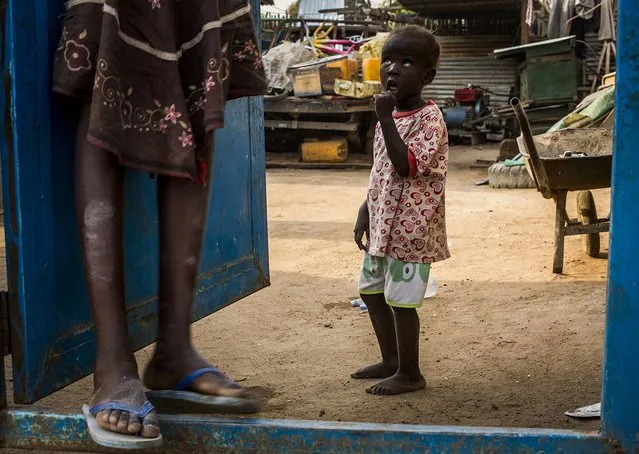
A child from South Sudan's Bari tribe stands at the entrance into a compound near Gudele market in Juba, South Sudan January 23, 2012. Gudele was the scene of last year's (December 18) murder of writer Isaiah Abraham, an outspoken critic of the government whose death has raised concerns over press freedom in the fledgling nation, according to US embassy officials. Relatives say Diing Chan Awuol, who wrote under the pen name of Isaiah Abraham, was shot dead earlier this month for outspoken comments that included calling for an improvement in relations with former enemies in Khartoum. (Photo by Camille Lepage/AFP Photo)
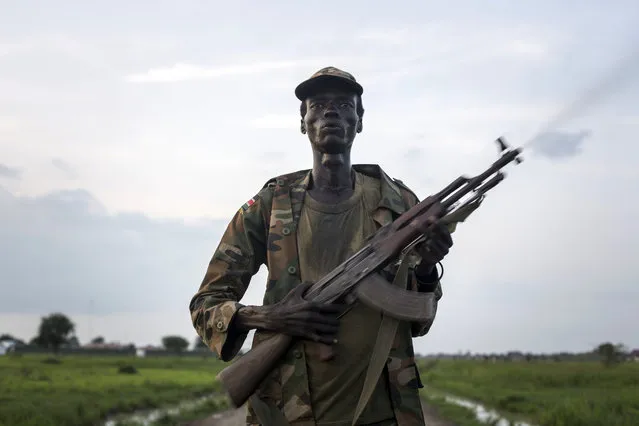
A member of the Lou Nuer tribe comes back home in the Yuai village, Uror county, Jonglei state in South Sudan, on July 23, 2013 after fighting against the rebel group of Yau Yau in Pibor county, South Sudan. Over 100,000 South Sudanese civilians are cut off from aid in the eastern state of Jonglei amid fierce fighting between rival ethnic groups, aid agencies and the United Nations warned on July 17. (Photo by Camille Lepage/AFP Photo)
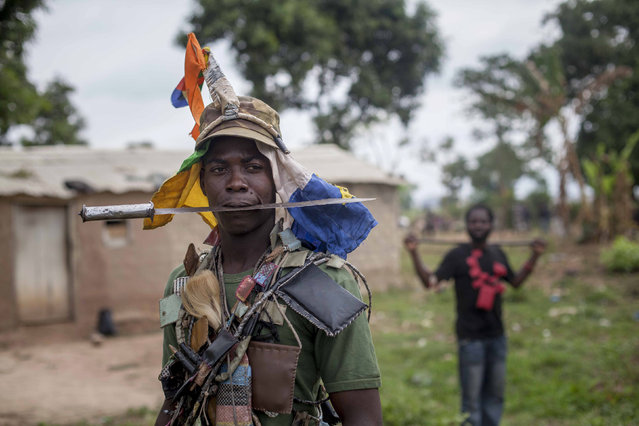
Anti-balaka fighters from the town of Bossembele patrol in the Boeing district of Bangui, Central African Republic, February 24, 2014. (Photo by Camille Lepage/Reuters)
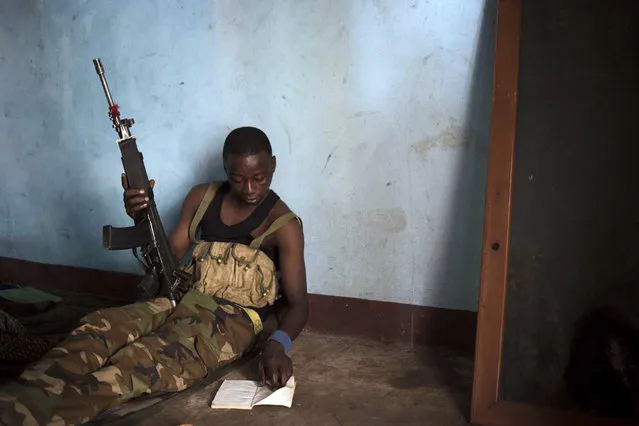
A Seleka fighter reads a book while holding a gun on a base, where 500 Seleka fighters are confined, in Bangui, Central African Republic, February 25, 2014. According to the men, they dare not leave the base, where they agreed to confine themselves with the French and African peacekeeping missions, for fear of being killed by anti-balaka militiamen. (Photo by Camille Lepage/Reuters)
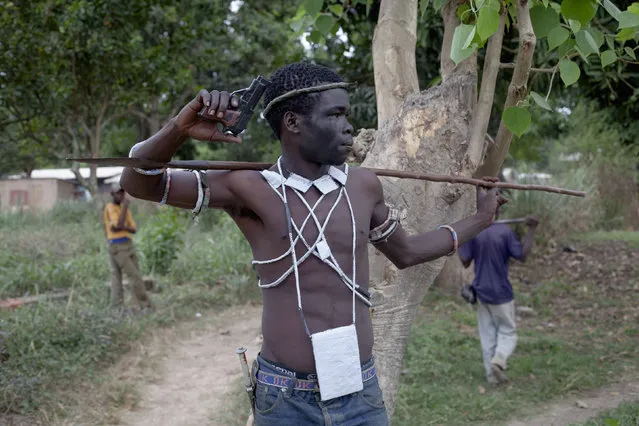
An anti-balaka fighter from the town of Bossembele patrols in the Boeing district of Bangui, Central African Republic, February 24, 2014. (Photo by Camille Lepage/Reuters)
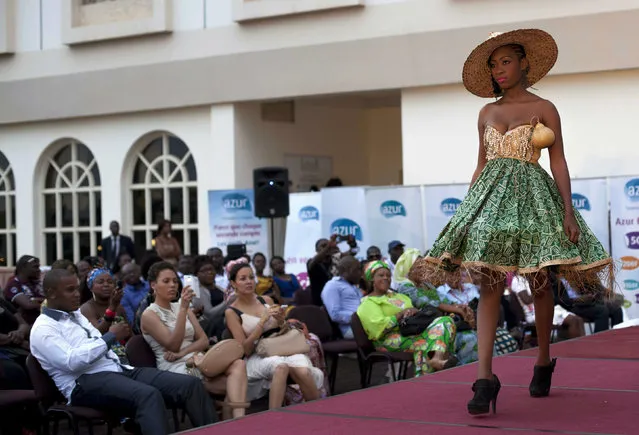
A model presents a creation during a fashion show organized by designer and stylist Sonia Bafonga to celebrate International Women's Day with the theme of promoting peace, in the capital of Bangui March 8, 2014. (Photo by Camille Lepage/Reuters)
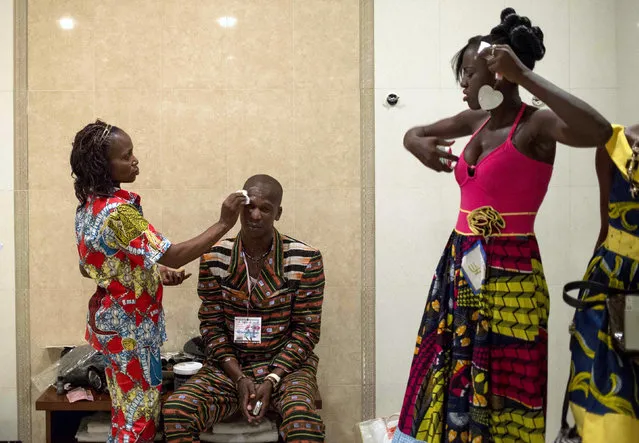
Models prepare backstage during a fashion show organized by designer and stylist Sonia Bafonga to celebrate International Women's Day with the theme of promoting peace, in the capital of Bangui March 8, 2014. On March 8 activists around the globe celebrate International Women's Day, which dates back to the beginning of the 20th Century and has been observed by the United Nations since 1975. The UN writes that it is an occasion to commemorate achievements in women's rights and to call for further change. (Photo by Camille Lepage/Reuters)
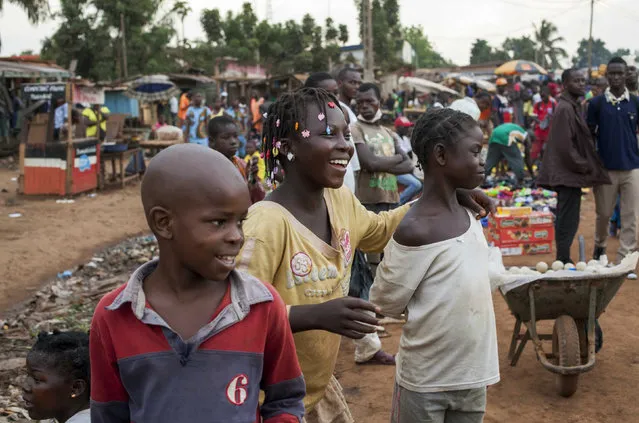
Children walk around an open-air market in Petevo in the Central African Republic's capital of Bangui, March 9, 2014. The United Nations estimates that some 650,000 people have been displaced by violence within Central African Republic, while nearly 300,000 have crossed into neighbouring countries. (Photo by Camille Lepage/Reuters)
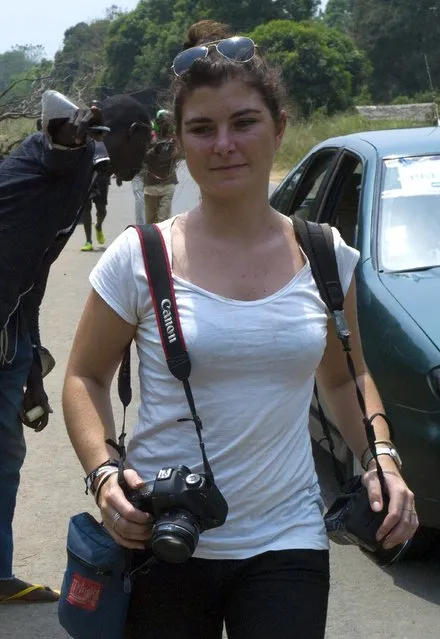
Picture taken in Damara, 70km north from Bangui, on February, 21, 2014 shows French journalist Camille Lepage. French journalist Camille Lepage, 26, has been killed while on a reporting assignment in Central African Republic, French President Francois Hollande said on May 13, 2014 in a statement, vowing to make every effort to shed light on the murder. “The body of Miss Lepage was found by a patrol of Sangaris troops while checking a vehicle driven by anti-Balaka militia in the region of Bouar” in west of the country, it said, referring to militamen from the mainly Christian vigilante group. (Photo by Fred Dufour/AFP Photo)
18 May 2014 08:54:00,
post received
0 comments
